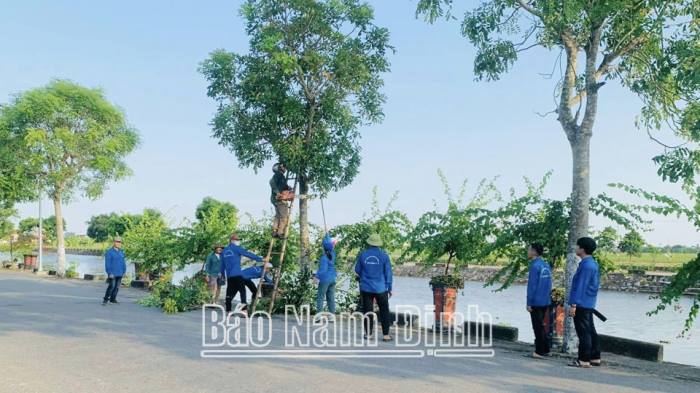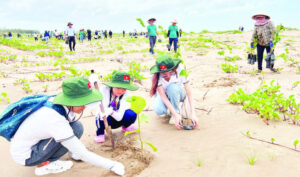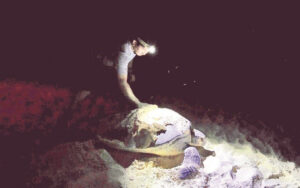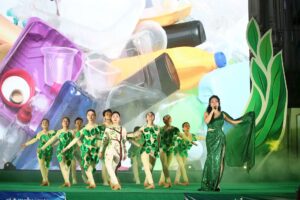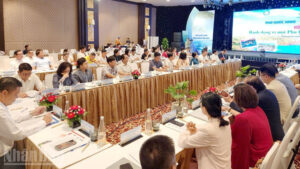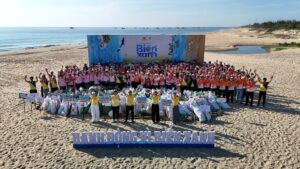Combining the poetic charms of its wild scenery and the simple daily lives of its people, “Heaven’s Gate”, as people often call Simacai, is becoming more and more attractive to travellers.
Si Ma Cai is located in a remote mountain area of Lao Cai province, at the far end of a road near the border with China and is inhabited by ethnic people.
Through spectacular mountain scenery
An old bus, heavily loaded with baggage and passengers crept slowly along a narrow winding road, with a high mountain on one side and a deep abyss on the other. Despite the danger we had to face, the humourous driver told us that it is much easier to go to Simacai now than before when it took a few days’ ride on horseback to reach the area.
Our first stop was Quan Than San, a southern commune of Simacai district, which is 1,600-1,800 metres above sea level and shrouded in white clouds all year around.
Phin ethnic village is another high point of the district with plum gardens looking like a water-colour painting. The village is so charming that our voluntary guide, a border soldier who has been posted there for nearly ten years, had to exclaim, “Look! It’s really spectacular!”
Despite its breath-taking scenery and favourable climate, Simacai is not popular with tourists because of its difficult terrain, low living standards and poor services. It’s rare enough to see a foreign tourist riding an old Russian motorbike covered with red soil and stopping there for a bowl of pho (rice noodle).
The mountain district of Simacai has 13 communes and 90 villages, 80 percent of which are inhabited by the Mong ethnic people. Most of the people there are living below the poverty line and need assistance from the government’s programme 135.
Phin village
It took us almost two hours to negotiate the less-than-10-kilometer bumpy road from the Quan Than San Commune People’s Committee to the Phin ethnic village. On arriving at Heaven’s Gate, we had to take a deep breath to summon up courage before continuing our trip along the one-meter-wide road with a deep abyss on one side. Ly Seo Phu, a communal cultural official had to do most of the talking to dispel our fears.
“It used to be very dangerous to go to the terraced hillside. Thanks to the government’s programme 135, the roads have been widened for motorbikes and cars, so our village is no longer isolated,” Phu said cheerfully.
Showing us around the village, elder Giang Seo Hang, said there are only 13 households living along the three slopes. “Since the district was rebuilt in 2000, there have been many non-governmental projects on the go here to help improve the people’s living conditions,” he said.
Pham Quang Tu, vice director of the Towards Ethnic Women (TEW) centre, said the centre has been working with the Simacai District People’s Committee and Phin residents on a number of projects to gradually improve the living conditions of Quan Than San residents.
TEW officials often came to live with local residents and learn about their expectations before deciding to focus on four major issues related to running water and environmental sanitation, saving credit and animal husbandry, Vietnamese herbal medicine development and forest protection, Tu recalled.
In Giang Seo Hang’s house, chairman of the Quan Than San Commune People’s Committee Ly Xuan Lau proudly said, “the ethnic people’s lives are changing day by day. Electricity is now available, all of the 13 families now have pigs, 10 of them have buffaloes, seven of them have TV sets and all the children go to school.”
After taking a sip of wine, he added, “We have even built a cultural house and are now restoring traditional Mong folk music, musical instruments, and martial arts to be ready to receive visitors.”
On our way to Pho Lu where we would take a train to Hanoi, we saw ragged children carrying bundles of firewood on their backs. A thought crossed our mind that the Phin village still has a long way to go before beautiful Mong girls have the chance to welcome tourists with their traditional “sinh tien” dance.



